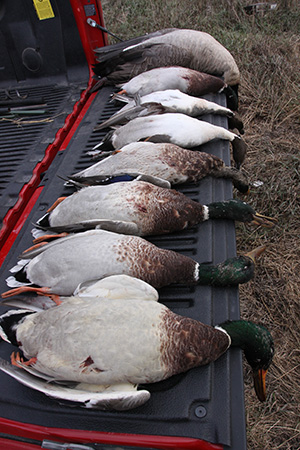In the October ’23 issue we recalled the days of the point system, specifically when you could, legally, shoot 10 pintails in one day in Texas (see “When Pintails Were 10 Points” on page14). It was an interesting time, and bears discussing.
The point system arose as an antidote to the premise that the established bag limit system required hunters to do something that many of them weren’t very good at—identifying birds before shooting them. The point system, on the other hand, did not make such a requirement, as long as birds were scored “in-hand.” The point system was first tested in 1968 in the San Luis Valley of Colorado. It was expanded to a few other locales the following year and debuted on what would be its largest scale in 1970 as a “regulatory alternative.”
 Many lifelong waterfowlers remember those days in the early 1970s when the point system was tested in New Jersey and Florida in the Atlantic Flyway, Iowa and Illinois in the Mississippi Flyway, and all Central Flyway states except North Dakota and Kansas.
Many lifelong waterfowlers remember those days in the early 1970s when the point system was tested in New Jersey and Florida in the Atlantic Flyway, Iowa and Illinois in the Mississippi Flyway, and all Central Flyway states except North Dakota and Kansas.
Instead of offering a total bag limit of a given number of ducks, the point system put a numeric value to separate species that could be included in a bag not to exceed a value of more than 100 points. Each drake mallard, for instance, counted as 20 points, while a hen mallard counted as 90 points. If you shot the hen mallard first, you could take only a single bird (including another hen mallard) before being limited out. If you shot a drake first, and then a hen mallard, you had exceeded 100 with the second bird and were limited out for the day, though still within the rules.
Of course, if you shot nothing but 10-point birds, which at that time included drake pintails, gadwalls, wigeon, shoveler, green-winged teal, blue-winged teal, scaup and goldeneye, you could have yourself a heck of a day getting to the 100-point limit.
The point system did what it was planned to do. Hunters who couldn’t identify ducks on the wing weren’t required to ID them until in hand (although if that ignorance led to a hen mallard, hen wood duck or other 90-point bird in the bag, plus any other duck, their day was done). It allowed experienced hunters to take more of what were deemed to be expendable birds on a population scale, such as drake mallards, drake pintails or other 10-point birds.
Unfortunately, the point system failed to pass the enforcement test. In other words, a lot of cheating went on. Commonly, hunters reordered their birds to maximize their bag. For example, they might shoot a hen mallard first, but then keep shooting 10-point birds up to a score of 90, simply saying that they shot the hen last, which, by that telling, would have masqueraded as legal.
Without the ability to enforce the rules, wildlife managers couldn’t justify continuing with the point system. Many wildlife professionals compare it to today’s “party hunting” infractions—when a group comprising multiple hunters shoots a full limit in which several hunters shoot the bulk of the birds for the larger group. Not cool. Not legal.
